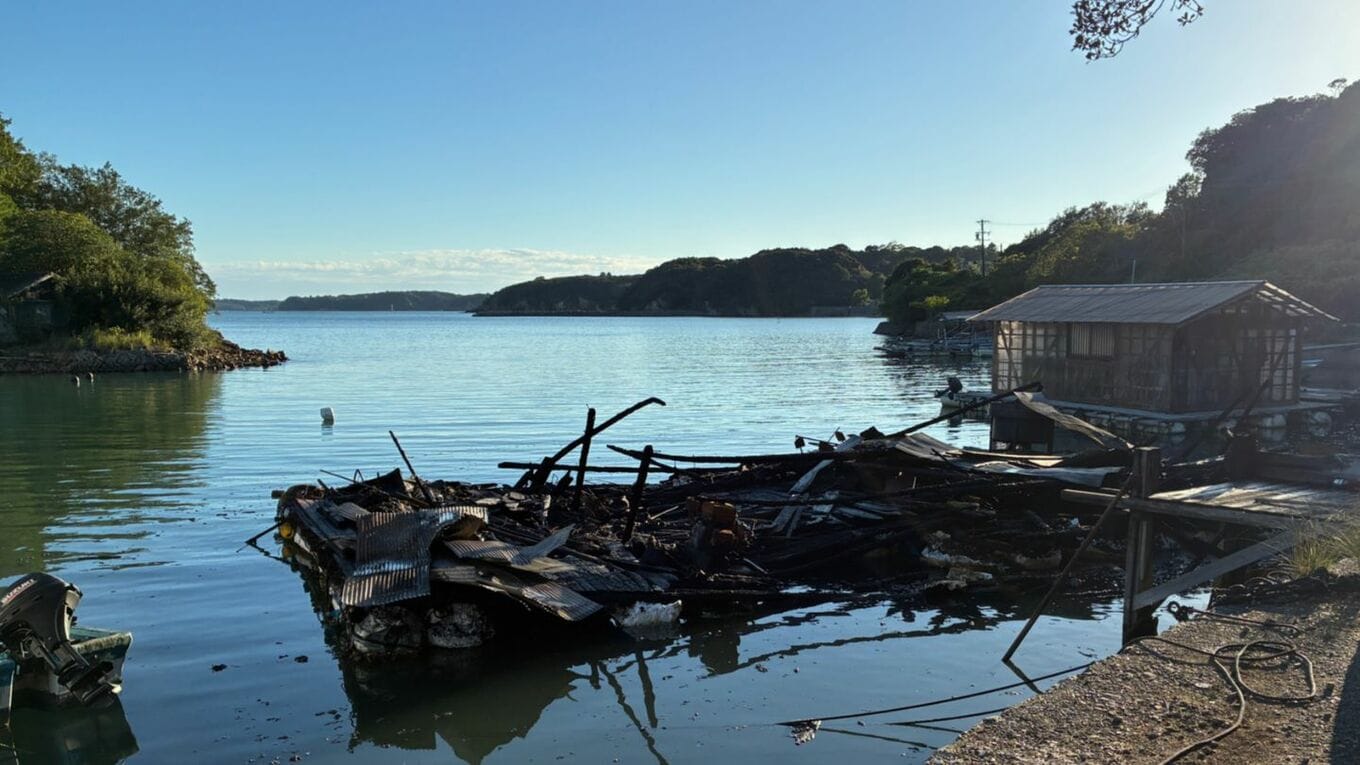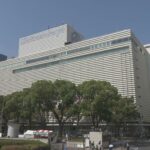In Toba City, Mie Prefecture, a raft used for aosa nori aquaculture and a hut were completely burned down.
The fire occurred in Amanzakicho, Toba City. According to the fire department, a passerby reported around noon today that “a raft is on fire.”
According to the owner, the fire started at a location containing a raft used for removing and washing cultivated aosa nori from nets, along with a hut built on top of it. The rising black smoke was clearly visible from an ama hut approximately 1 kilometer away.
Seven fire trucks responded and extinguished the fire about two hours later, but the raft and hut were completely destroyed.
No one was nearby when the fire started, and there were no injuries. The fire department and police are investigating the cause of the fire.
raft
A raft is a simple watercraft made of logs, planks, or buoyant materials tied together, historically one of the earliest forms of boat building used by ancient cultures for transportation, fishing, and exploration. Its design has evolved from primitive, temporary structures to sophisticated, specialized versions used for recreation, whitewater adventures, and military operations. While not a single cultural site, the raft’s invention was a pivotal technological advancement that enabled the settlement of new lands and the expansion of trade routes across the world’s rivers and oceans.
hut
A hut is a simple, small dwelling, often made from natural materials like wood, mud, or thatch. Historically, huts have been used by people across the globe as one of the earliest and most basic forms of shelter, from prehistoric times to rural and indigenous communities today. They represent a fundamental architectural form built for practicality and survival.
ama hut
An ama hut is a traditional dwelling used by the ama, the women divers of Japan and Korea who free-dive for shellfish and pearls. These simple, onshore huts provide a crucial space for the divers to rest, warm themselves by a fire, and socialize between dives. This practice has a history spanning centuries and is an integral part of the coastal cultural heritage in regions like Mie Prefecture in Japan.
Toba City
Toba City is a coastal city in Mie Prefecture, Japan, renowned as the home of the Ise-Shima region and its pearl farming industry, pioneered by Kokichi Mikimoto in the late 19th century. It is a major tourist destination, famous for the Toba Aquarium and its scenic bay, which includes islands like Mikimoto Pearl Island. The city is also historically significant as the site of the Toba Castle ruins and its close association with the Ise Grand Shrine.
Mie Prefecture
Mie Prefecture is located in central Japan and is historically known as the home of the Ise Grand Shrine, one of Shinto’s most sacred sites. The region also preserves traditions like ama (female free-divers) and is famous for its cultured pearls. Additionally, Mie contains parts of the ancient Ise Bay trading routes and the Kumano Kodō pilgrimage trails.
Amanzakicho
I am unable to provide a summary for “Amanzakicho” as I do not have sufficient information about this specific location in my knowledge base. It is possible that the name may be misspelled or refer to a very local or lesser-known site. To assist you better, could you please verify the spelling or provide any additional context, such as the country or region it is located in?
fire department
A fire department is a public or private organization that provides emergency response services for fire suppression, rescue operations, and medical aid. Historically, the first organized fire brigades date back to ancient Rome, but the modern municipal fire department largely developed in the 17th and 18th centuries with the advent of hand-pumped fire engines. Today, these departments are essential community services focused on prevention, preparedness, and emergency response.
police
“Police” refers to organized civil law enforcement bodies that maintain public order and safety. Modern policing originated in the early 19th century with Sir Robert Peel’s establishment of the London Metropolitan Police, creating a professional, uniformed, and preventive civilian force. Today, police forces exist worldwide with varying structures, but they universally serve to enforce laws, prevent crime, and protect citizens.






